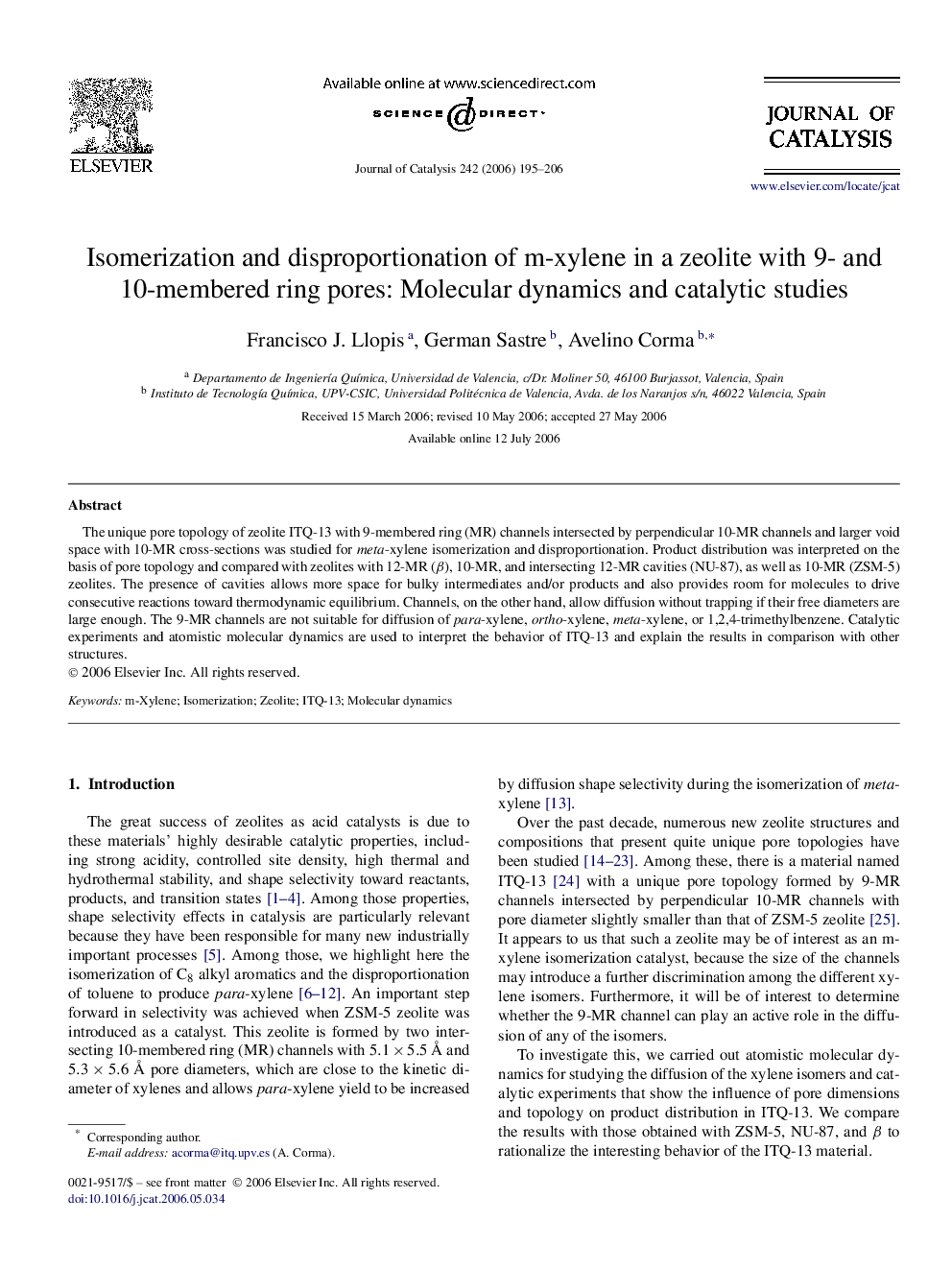| Article ID | Journal | Published Year | Pages | File Type |
|---|---|---|---|---|
| 63474 | Journal of Catalysis | 2006 | 12 Pages |
The unique pore topology of zeolite ITQ-13 with 9-membered ring (MR) channels intersected by perpendicular 10-MR channels and larger void space with 10-MR cross-sections was studied for meta-xylene isomerization and disproportionation. Product distribution was interpreted on the basis of pore topology and compared with zeolites with 12-MR (β), 10-MR, and intersecting 12-MR cavities (NU-87), as well as 10-MR (ZSM-5) zeolites. The presence of cavities allows more space for bulky intermediates and/or products and also provides room for molecules to drive consecutive reactions toward thermodynamic equilibrium. Channels, on the other hand, allow diffusion without trapping if their free diameters are large enough. The 9-MR channels are not suitable for diffusion of para-xylene, ortho-xylene, meta-xylene, or 1,2,4-trimethylbenzene. Catalytic experiments and atomistic molecular dynamics are used to interpret the behavior of ITQ-13 and explain the results in comparison with other structures.
